Occupational environment monitoring at a crude oil extraction factory
99,000 ₫
Note: The above price is calculated for one sample, and the price may fluctuate depending on the area of the environment to be monitored and market movements. For more accurate pricing support, please refer to the price list or contact our consulting staff directly.
Monitoring the environment of a crude oil extraction factory is a session of collecting, analyzing, and evaluating workplace factors that may be harmful to workers’ health.
Table of Contents
Toggle1. Overview of Crude Oil Extraction Factory
a. What is a crude oil extraction factory?
Factory for crude oil extraction is a production facility specialized in extracting and processing crude oil from petroleum resources. These factories are usually built near areas with crude oil reserves, such as offshore regions, deserts, or onshore oil reservoirs.
The crude oil production process in a crude oil extraction factory includes drilling and extracting oil from wells, after which crude oil is transported to the factory. Here, it is processed to remove impurities and refined into various petroleum and gas products. The refining steps include purification, distillation, hydrotreating, and other processes to produce crude oil products and their derivatives.
Crude oil products and derivatives can be used for many purposes, including transportation fuel, power generation, industrial fuel, and chemical feedstock. Crude oil extraction factories play an important role in the petroleum industry and make significant contributions to global energy supply.

b. Production stages in a crude oil extraction factory
The production stages in a crude oil extraction factory include:
- Drilling and crude oil extraction: This process involves using drilling equipment to reach the bottom of oil wells and drill holes to extract crude oil from petroleum reservoirs. Once extracted, crude oil is brought to the surface through pipelines and specialized equipment.
- Initial treatment: Crude oil from wells is stored in temporary storage systems and then transferred to the factory. Here, crude oil undergoes initial treatment processes, including separating oil and water, removing impurities, and eliminating harmful substances.
- Refining: This is an important step to convert crude oil into different petroleum products. Refining includes distilling crude oil to separate components with different boiling points. Distillation towers are used to separate oil into fractions (such as gasoline, diesel, and lubricating oil), additives, and by-products.
- Hydrotreating: This process treats crude oil or fractions with hydrogen in a catalytic reactor. It helps remove contaminants such as sulfur and nitrogen, improving product quality and stability.
- Additional processes: After refining and hydrotreating, oil may undergo additional processes such as hydrocracking, catalytic cracking, or reforming to create high-grade petroleum products such as premium gasoline, jet fuel, lubricants, and motor oils.
- Storage and distribution: After processing, petroleum products are stored in tanks and then transported to distribution points. From there, oil can be delivered to stores, gas stations, seaports, or transportation means to serve consumer and industrial demand.

c. Types of machinery used in crude oil extraction factories
In crude oil extraction factories, many types of machinery and equipment are used to perform production processes. Below are some common types of machinery in the crude oil industry:
- Drilling machines: Used to drill oil wells during crude oil extraction from underground. Different types of drilling machines include mechanical drills, pneumatic drills, and seismic drills (cable tools) used in the petroleum industry.
- Initial treatment equipment: Includes temporary storage tanks, oil pipelines, vacuum pumps, oil-water separators, oil pumps, and other equipment used to process and transport crude oil from wells to the factory.
- Distillation towers: A crucial device in crude oil refining, used to separate different crude oil components based on boiling points and volatility.
- Storage tanks: Used to store crude oil and refined products before being distributed or further processed. These tanks are usually made of corrosion-resistant materials such as stainless steel and equipped with temperature, pressure, and safety control systems.
- Compressors: Used in crude oil factories to compress gases such as hydrogen, methane, and propane. Compressors provide the pressure and flow needed for processes such as hydrotreating and hydrocracking.
- Chemical processing equipment: During refining, devices such as reactor vessels, heat exchangers, and mixers are used to conduct chemical reactions and convert crude oil into refined products.
- Control and monitoring systems: Crude oil factories use automatic control and monitoring systems (SCADA – Supervisory Control and Data Acquisition) to supervise and manage production processes. This system tracks key parameters such as temperature, pressure, flow, and safety data across the factory.

d. Possible occupational diseases for workers in crude oil extraction factories
Workers in crude oil extraction factories may face some occupational diseases related to the working environment and hazardous substances in the petroleum industry. Below are some common occupational diseases in this field:
- Respiratory diseases: Fine particles and pollutants such as dust and hydrocarbon vapors may cause lung diseases such as pneumonia, bronchitis, or other respiratory problems. For example, working in high sulfur environments can cause sulfur lung disease.
- Skin diseases: Contact with chemicals such as crude oil, solvents, and cleaners may cause skin irritation, eczema, dermatitis, or other skin conditions.
- Disease related to toxic substances: Hazardous chemicals such as benzene, vinyl chloride, formaldehyde, and heavy metals may cause blood disorders, liver diseases, kidney problems, and other health issues.
- Cardiovascular diseases: The petroleum working environment may include factors increasing cardiovascular risks, such as noise, high pressure, and stress.
- Thyroid diseases: Pollutants such as cyanide and chlorinated hydrocarbons may affect thyroid function and cause health problems such as thyroid disorders.
- Cancer: Long-term exposure to pollutants may increase risks of cancers such as lung cancer, skin cancer, digestive cancers, and others.

e. Common types of crude oil on the market
There are many common types of crude oil on the market, classified based on origin, chemical properties, and uses. Some common types include:
- Sweet crude oil: Low-sulfur crude oil with fewer impurities. Sweet crude is easier to refine and produces high-quality refined products such as premium gasoline and diesel.
- Sour crude oil: High-sulfur crude oil with more impurities. Sour crude requires more complex treatment to remove sulfur and impurities, and its refined products are generally lower in quality.
- Heavy crude oil: Higher density crude containing heavy petroleum compounds such as lubricants and fuel oil. Heavy crude often requires complex processing to separate higher boiling point components.
- Extra heavy crude oil: Very dense crude containing large amounts of heavy compounds such as bitumen. This type requires special extraction and treatment methods to convert into refined products.
- Offshore crude oil: Extracted from beneath the seabed, often requiring advanced drilling and transport technologies compared to onshore crude oil.
2. Overview of Occupational Environment Monitoring Services
a. What is occupational environment monitoring in crude oil extraction factories?
Occupational environment monitoring (or workplace environmental measurement) in crude oil extraction factories involves collecting, evaluating, and analyzing environmental indicators to apply timely measures, reduce harmful impacts on worker health, and prevent occupational diseases. Occupational environment monitoring is mandatory for crude oil extraction factories.
It plays the most important role in caring for, protecting, and improving worker health because employees are the main resource that directly generates enterprise profits. Workers regularly exposed to risk factors and occupational hazards exceeding permissible limits will suffer health impacts and develop occupational diseases.
REGISTER OCCUPATIONAL ENVIRONMENT MONITORING SERVICE
b. Nam Viet occupational environment monitoring program
Nam Viet’s occupational environment monitoring program is researched by monitoring engineers in labor safety and environmental protection. With the goal of ensuring worker health and safety, this program applies modern measurement methods to monitor air, water, microclimate, physical factors, and dust in the workplace. It plays an important role in ensuring safe working environments and protecting worker health.
Additionally, Nam Viet’s program contributes to researching and developing new solutions to improve workplace environmental quality. With the dedication and professionalism of its monitoring experts, Nam Viet’s exclusive program is becoming a breakthrough in labor safety management and environmental protection in Vietnam.

c. Standardization in workplace environmental measurement procedures
Standardization in Nam Viet’s workplace measurement procedures is crucial for ensuring measurement quality. To guarantee accuracy and reliability, this program follows recognized standards and procedures of the Ho Chi Minh City Department of Health. This ensures collected data is highly reliable for workplace evaluation and decisions to improve environments for worker health protection.
These standardized procedures are also carried out by qualified monitoring specialists with many years of experience, giving managers and experts confidence in An Toan Nam Viet’s results to make accurate and valuable decisions for worker health and environmental protection.
By applying standardization, Nam Viet demonstrates its commitment to ensuring safe workplaces while contributing positively to labor safety management and environmental protection in Vietnam.
d. Reporting results of crude oil extraction factory monitoring
Monitoring results are prepared according to Form 04, Appendix III issued with Decree 44/2016/ND-CP and made in 2 copies: one sent to the enterprise that signed the monitoring contract and one kept by the monitoring organization.
The storage period for occupational environment monitoring results is indefinite as required by law.

e. Frequency of occupational environment monitoring as per law
According to Clause 2, Article 18 of the Law on Occupational Safety and Health 84/2015/QH13, employers must conduct occupational environment monitoring to evaluate harmful factors at least once a year.
f. Deadline for submitting occupational environment monitoring reports
The deadline for submission is before December 31 every year. Enterprises in manufacturing sectors must submit occupational environment monitoring reports to the Department of Health in the locality where their headquarters and employees are located.
When there are changes in technology, production processes, or facility upgrades that may create new harmful factors, enterprises must update occupational hygiene records with the new monitoring requirements.
g. Penalties for violations of occupational environment monitoring for employers
According to Article 27 of Decree 12/2022/ND-CP dated January 17, 2022, on administrative penalties in the field of labor, social insurance, and Vietnamese workers working abroad under contracts:
- Clause 2: A fine of 2,000,000 – 5,000,000 VND for employers who fail to publicly inform employees at the monitoring site and workplace about monitoring results and hazard assessments immediately after results are available.
- Clause 3: A fine of 20,000,000 – 40,000,000 VND for employers failing to conduct occupational environment monitoring to control health hazards as required by law.
- Clause 4: A fine of 40,000,000 – 60,000,000 VND for employers collaborating with monitoring organizations to commit fraud during monitoring activities, without reaching criminal liability.
3. Harmful environmental factors for workers in crude oil extraction factories
Workers in crude oil extraction factories may be exposed to many harmful environmental factors. Below are some potential environmental factors that can be harmful to workers’ health in this industry:
- Toxic fumes and gases: During the crude oil extraction process, toxic fumes and gases such as hydrocarbons, sulfur dioxide, benzene, and heavy metal compounds may exist. Long-term exposure to these substances can be dangerous to the respiratory system, nervous system, liver, and cause other health issues.
- Dust and impurities: The crude oil extraction process can generate dust and impurities such as drilling dust, metal particles, and fine particles. Inhalation of these particles can cause respiratory irritation, pneumonia, and other health problems.
- Noise: Machinery and equipment in crude oil extraction factories often generate high noise levels. Prolonged exposure to noise can damage hearing, cause stress, and lead to other health issues.
- Pressure and temperature: Processes in crude oil extraction factories may create high pressure and temperature. Exposure to unsafe pressure and temperature can cause injuries, burns, and other health problems.
- Chemicals: Chemicals used in crude oil extraction and processing can be hazardous to health. Exposure to chemicals such as solvents, detergents, and catalysts may cause skin, eye, and respiratory irritation, as well as increase the risk of serious illnesses.
- Physical factors: In crude oil extraction factories, there may be physical hazards such as slips, collisions, falling objects, or other accidents. These incidents can cause injuries and harm to workers’ health.
REGISTER FOR OCCUPATIONAL ENVIRONMENT MONITORING SERVICE
4. Measures to improve the working environment in crude oil extraction factories
Improving the working environment in crude oil extraction factories is an important factor to ensure workers’ health and safety. Below are some measures that crude oil extraction factories can apply to improve the working environment:
- Ensure safety and environmental management systems: The factory should establish and implement strong health, safety, and environment (HSE) processes and policies. This includes developing safe working procedures, training employees on safety and environment, and ensuring compliance with relevant regulations and standards.
- Control emissions and waste: The factory needs to apply measures to control and reduce polluting emissions and waste. This may include using effective emission treatment technologies, installing waste collection and treatment systems, and implementing recycling and reuse processes.
- Adjust production processes: The factory should review and optimize production processes to reduce noise, emissions, and waste. The use of advanced technology, optimized processes, and performance control will help reduce environmental impacts and improve the working environment.
- Provide personal protective equipment (PPE): The factory must ensure that workers are provided with and properly use suitable PPE to protect themselves from harmful environmental factors. This includes helmets, dust-proof goggles, masks, chemical-resistant clothing, gloves, and safety shoes.
- Training and raising awareness: The factory needs to train and raise awareness for employees about environmental hazards, safe working methods, and the use of PPE. Creating a workplace environment with safety and environmental awareness will help reduce the risk of accidents and occupational diseases.
- Regular assessment and monitoring: The factory should conduct regular assessments and monitoring of the working environment to identify potential issues and apply corrective and improvement measures. This may include testing air, water, noise, lighting, and other workplace environmental factors.
- Periodically organize occupational environment monitoring in factories and enterprises, collect and analyze harmful factors to workers, thereby adjusting and reducing hazards to prevent occupational diseases for them.
5. Benefits of regular monitoring in crude oil extraction factories
An Toan Nam Viet provides businesses with outstanding benefits when using occupational environment monitoring services in accordance with Decree 44/2016/ND-CP on the management and control of harmful factors in the working environment that affect workers.
- Businesses can proactively control harmful factors in workshops or factories.
- Receive recommendations on measures to minimize harmful factors and improve the quality of the working environment.
- Indirectly protect human resources, the main factor in business development.
- Reduce the impact of occupational diseases on human health, thereby minimizing treatment costs later on.
- Improve workers’ health, leading to guaranteed and maintained product quality and productivity.
- Comply with occupational safety regulations, avoiding legal risks.
- Create credibility and professionalism in all aspects, thereby enhancing the brand for businesses.
Nam Viet’s occupational environment monitoring service is the solution to minimize the harmful effects of occupational diseases, contributing to a healthier and higher-quality working environment.

6. National occupational environment monitoring center
Occupational environment monitoring center of Nam Viet is a professional unit specializing in monitoring and measuring occupational environment quality across all provinces and cities in Vietnam. With a team of experienced monitoring specialists, the center uses modern measuring equipment to ensure accuracy and reliability.
In addition to providing monitoring services, the center also supports customers in planning, handling, and monitoring occupational environment issues. With the motto “customers are the center,” the center focuses on customer satisfaction, meeting all customer needs, and committing to providing the best solutions for businesses.
REGISTER FOR OCCUPATIONAL ENVIRONMENT MONITORING SERVICE
With investments in technology, equipment, and human resources, Nam Viet’s monitoring center has become one of the reputable units in the field of occupational environment monitoring in Ho Chi Minh City with the following goals:
- We always value brand reputation and the quality of our services.
- We provide customers with the best and most suitable solutions possible.
- Together with a team of experienced Masters and Engineers with expertise, we aim to protect the environment and bring benefits to businesses.
- With the Nam Viet Monitoring team, your company will receive professional services from experts in the monitoring field. At the same time, you will also get the best cost advantages.
The process of implementing occupational environment monitoring at Nam Viet includes the following basic steps:
- Before conducting occupational environment monitoring, we always ensure that machinery and equipment serving occupational environment monitoring are adjusted and calibrated in accordance with the law.
- Perform the occupational environment monitoring process fully and correctly as committed with the Department of Health.
- Report occupational environment monitoring results truthfully to employers.
- If occupational environment monitoring results are not safe for workers, Nam Viet will support in providing remedial solutions and the labor facility will implement as follows:
- Implement measures to improve working conditions to minimize harmful factors and prevent occupational diseases.
- Organize health checkups to detect early occupational diseases and work-related illnesses for workers in unsafe environments.
- Provide physical allowances for workers in accordance with labor laws.

7. Occupational environment monitoring service quotation
To help businesses carry out occupational environment monitoring professionally and effectively, Nam Viet provides customers with a service quotation for occupational environment monitoring with quality and reasonable costs.
- Our service quotation provides detailed information on the prices of monitoring services we offer, including costs related to transportation, measurement, analysis, and reporting. Customers can be completely assured of the accuracy and reliability of the monitoring reports we provide.
- We are committed to always offering the most competitive and reasonable prices in the market, and we are also ready to quickly and professionally provide consultation and answer any questions about monitoring services.
- With Nam Viet’s monitoring quotation, customers can easily select service packages that suit their needs. We are committed to bringing customers the highest satisfaction with professional service quality.
1 review for Occupational environment monitoring at a crude oil extraction factory
No comments yet

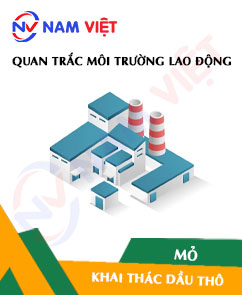
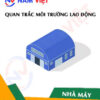
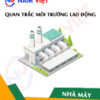
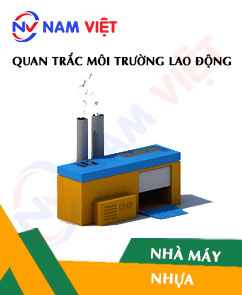


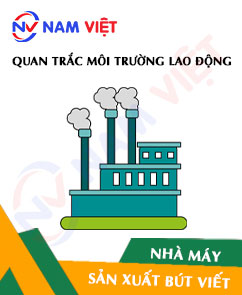
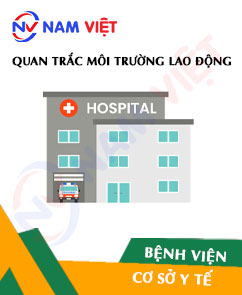
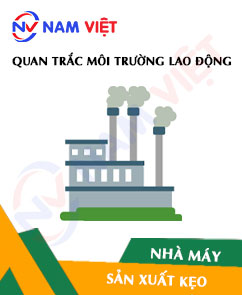


maituyet.cuong12
Professional labor environment monitoring unit